Update: Nvidia Titan X Pascal 12GB Review
Ashes of the Singularity, Battlefield 4 And DOOM
Ashes of the Singularity
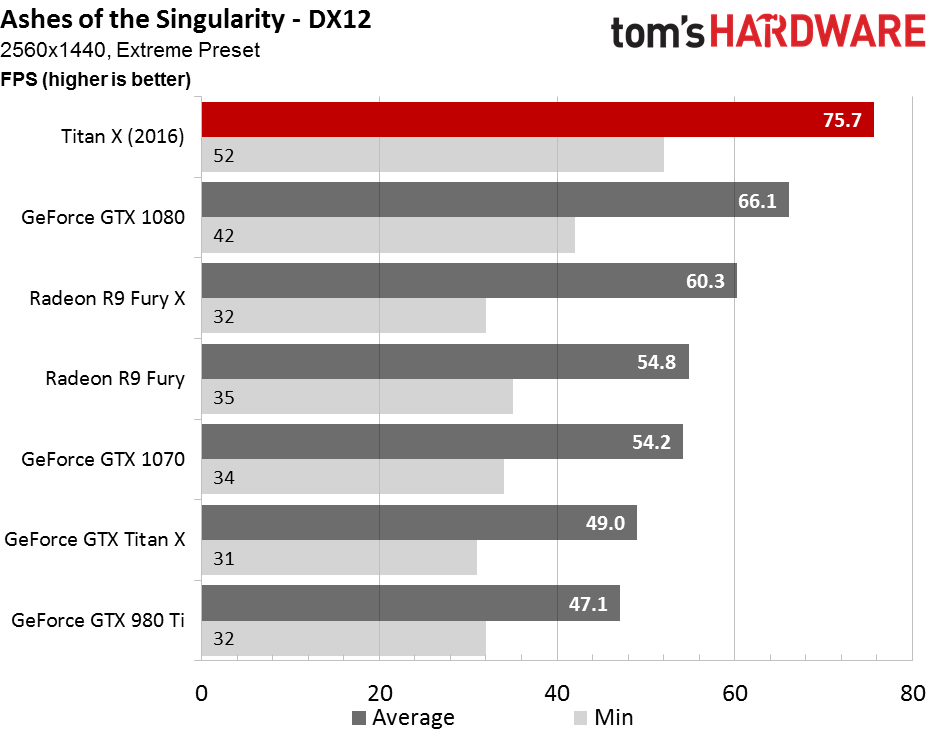
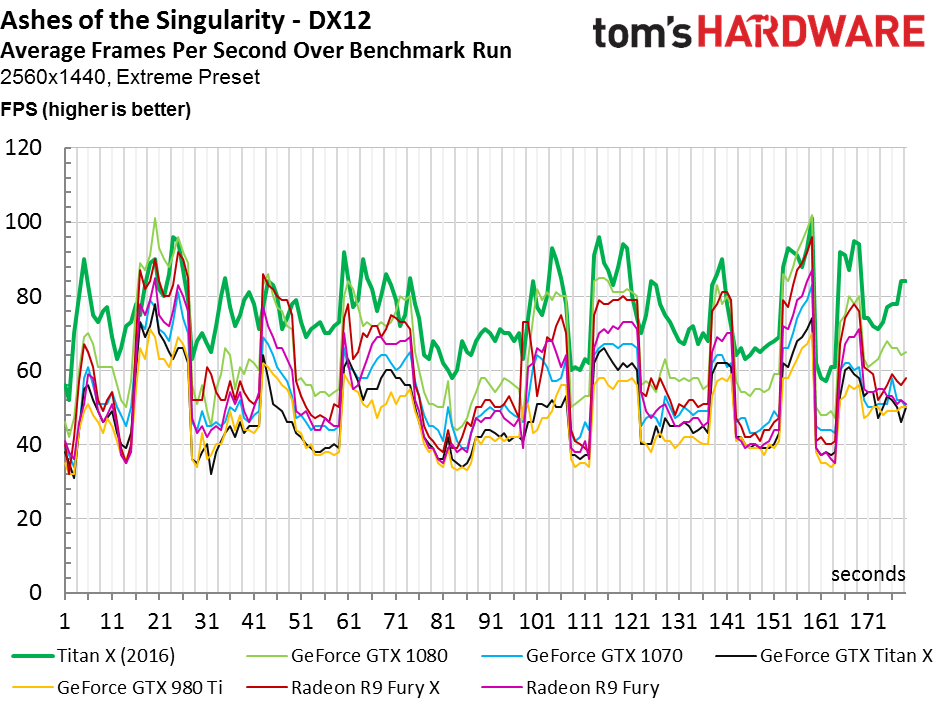
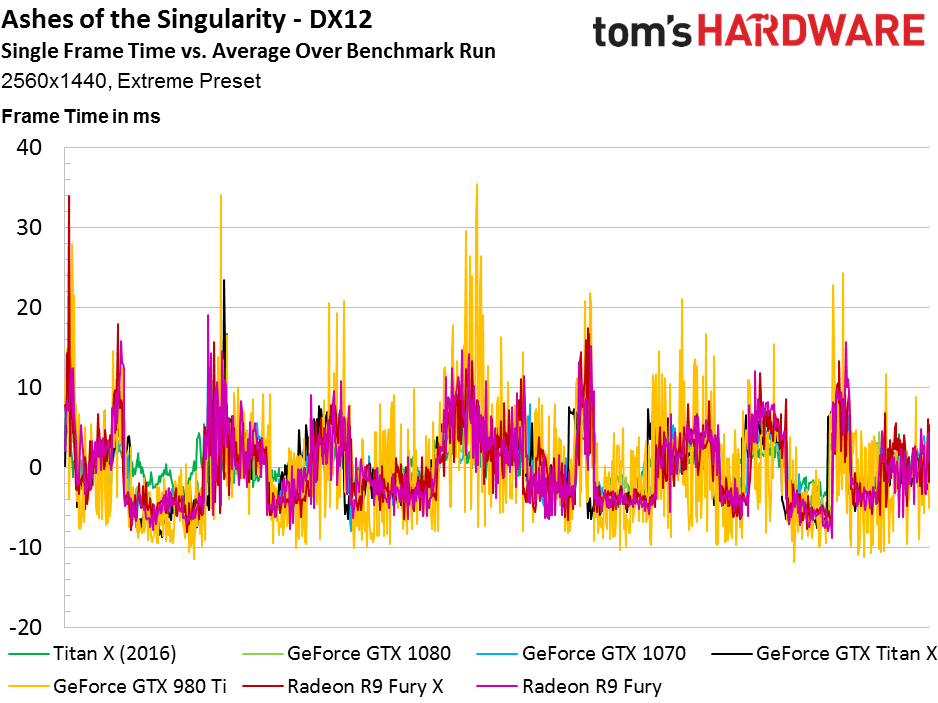
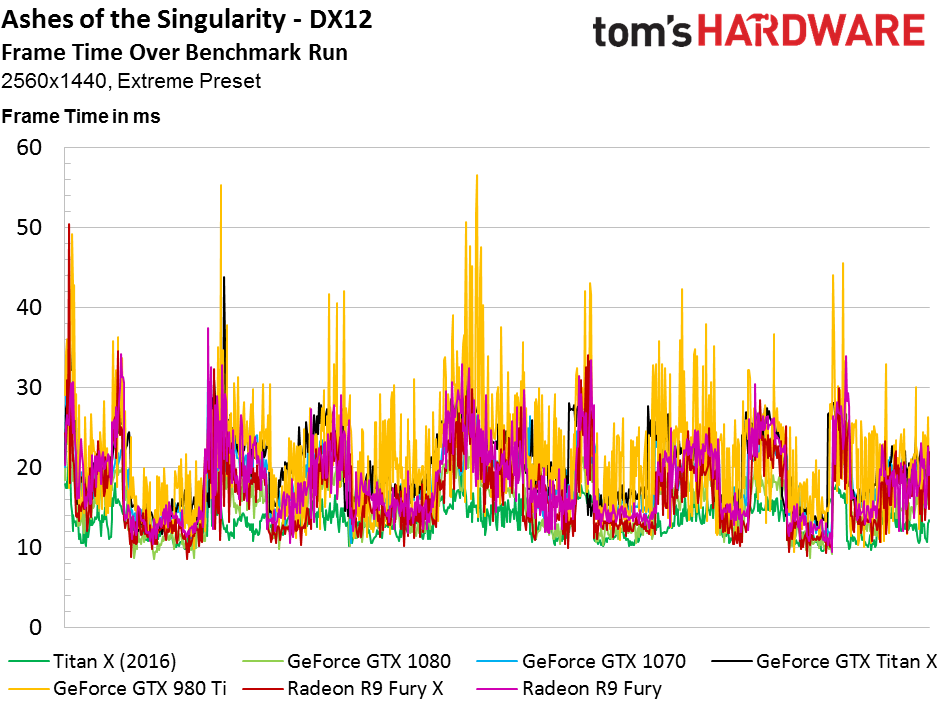
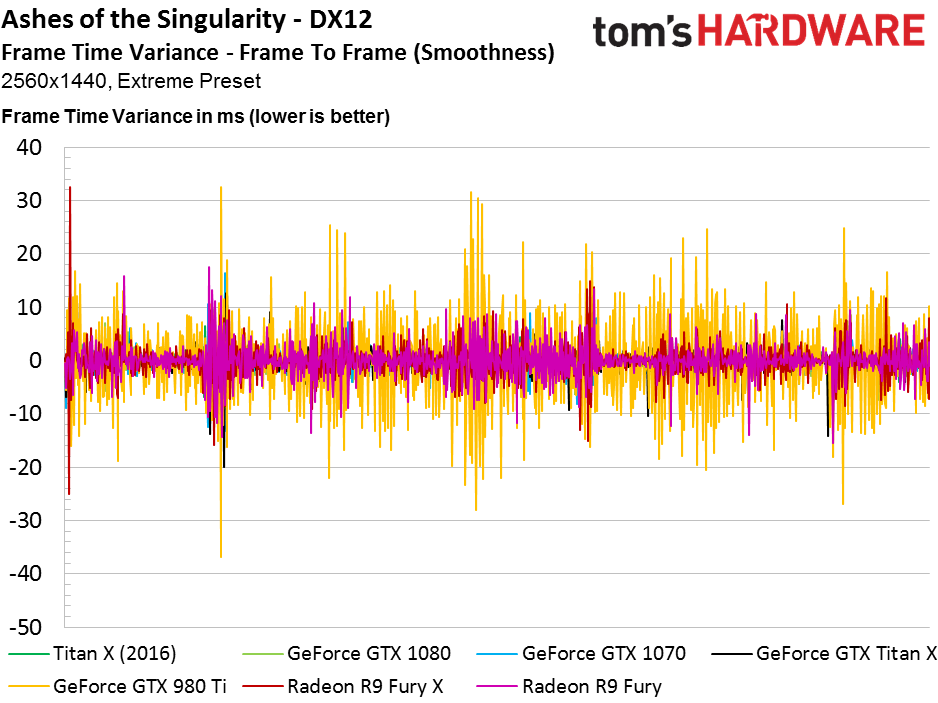
Our Ashes numbers at 2560x1440 should already be familiar from Updated: Nvidia GeForce GTX 1070 8GB Pascal Review. The obvious addition is Titan X, which posts an average frame rate 15% faster than the GeForce GTX 1080. Perhaps more important, its minimum frame rate is 24% higher. This isn’t a card anyone’s going to buy to play at QHD, though.
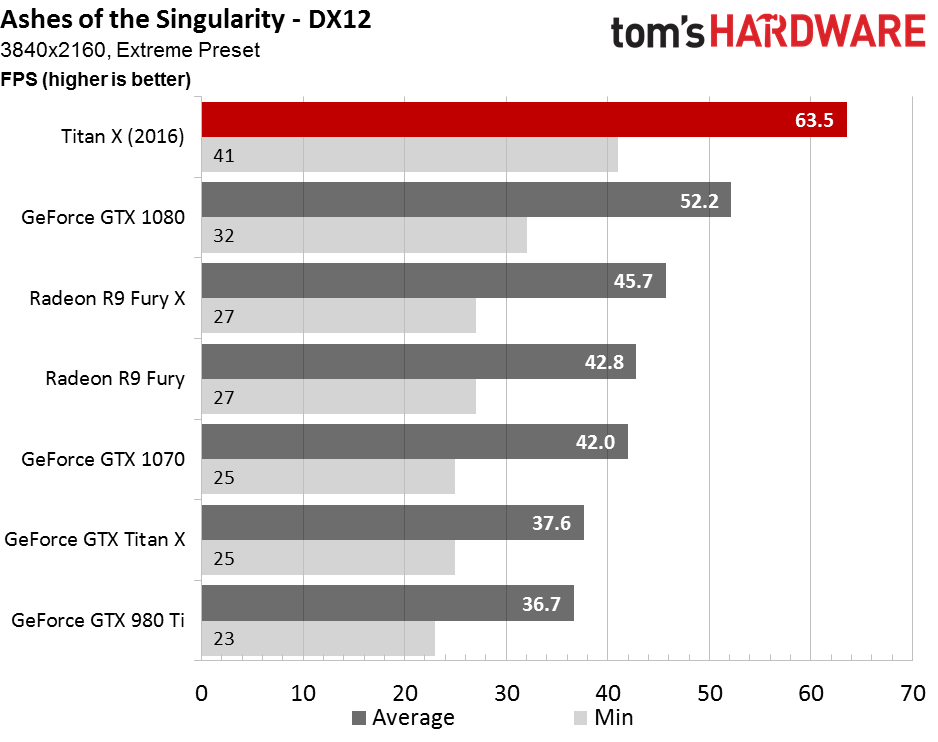
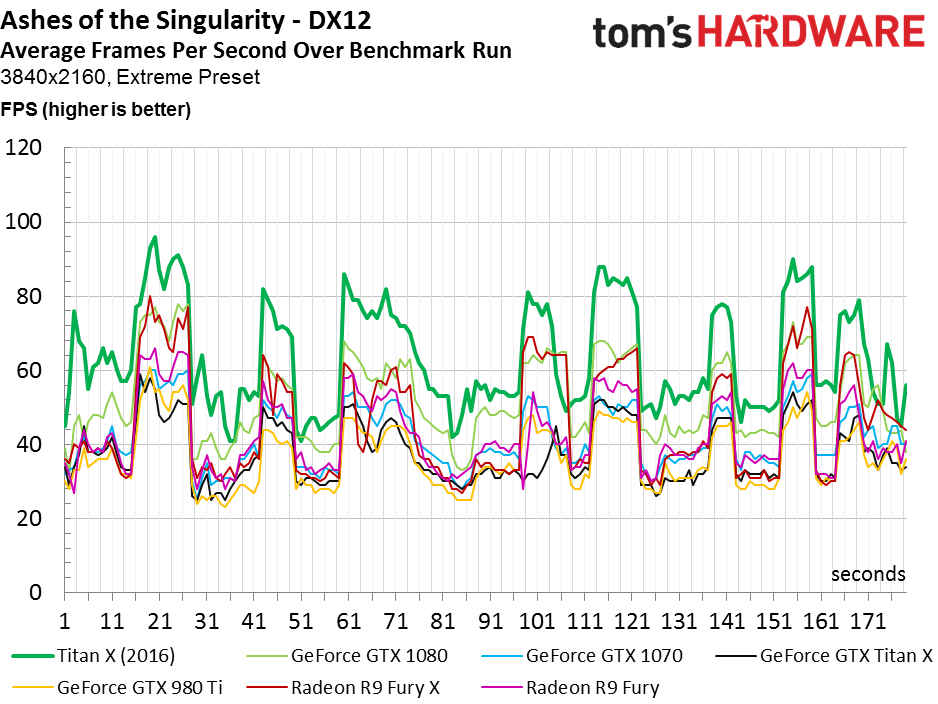
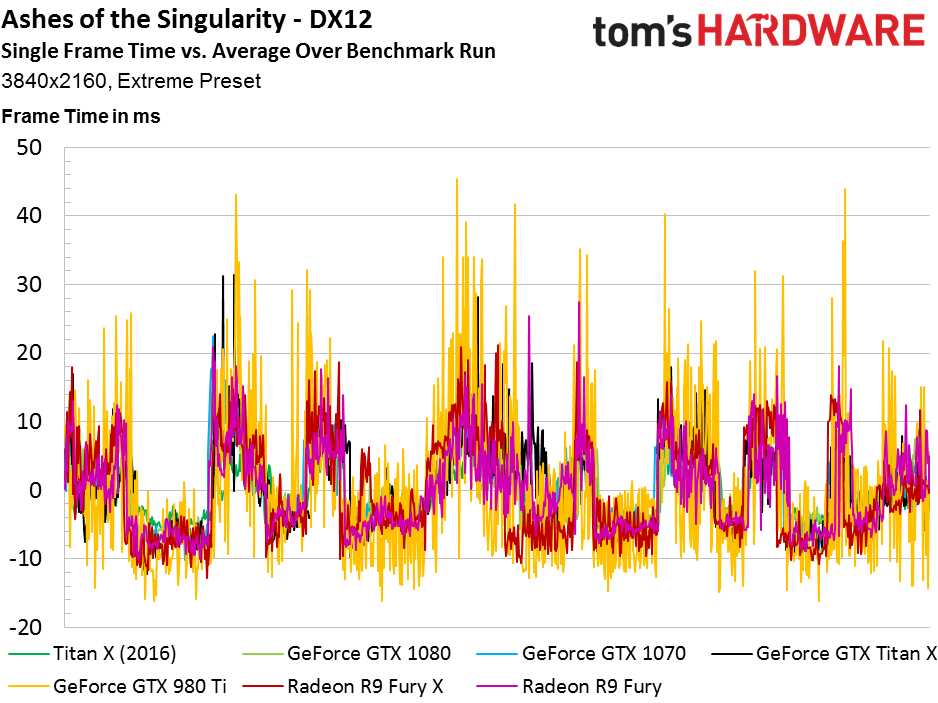
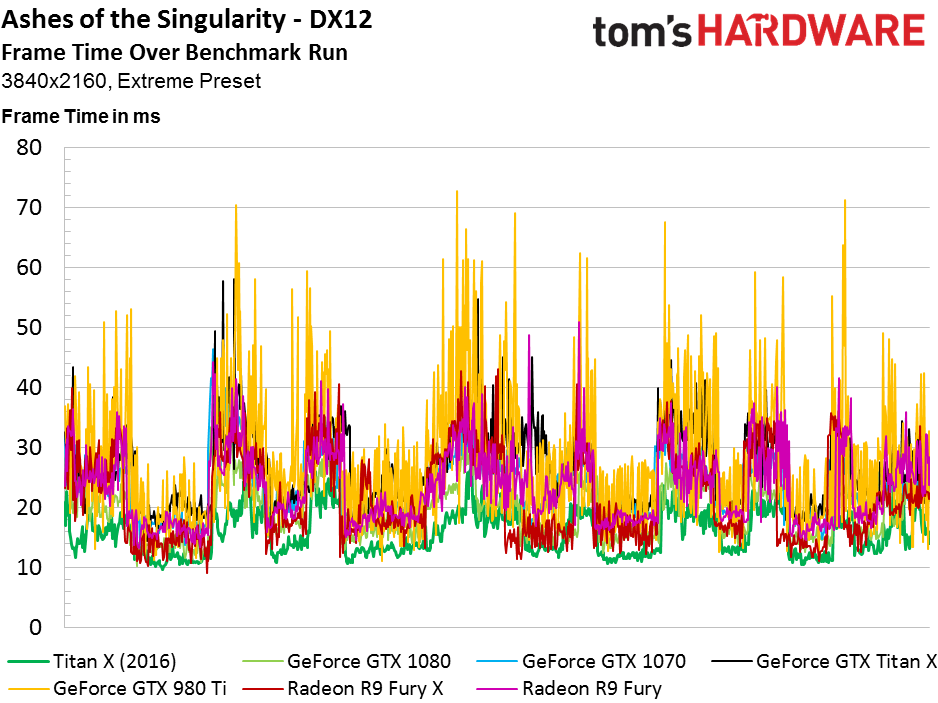
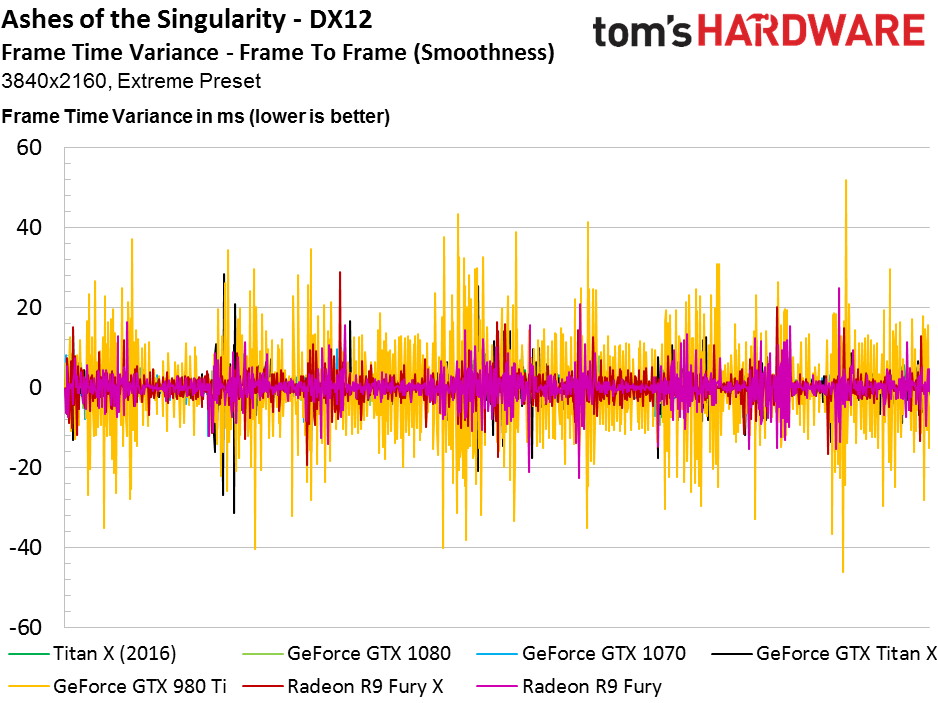
At 4K, the Titan X’s lead over the 1080 grows to 22%, and its minimum frame rate is now 28% higher. If you were of the mind that one GP104 couldn’t handle 3840x2160, Titan X could be your solution.
The GeForce GTX 980 Ti stands out as the card struggling most with high frame times, though it’s blocking the original Titan X in our charts, which shares a similar fate.
AMD’s Fiji-based boards notably outperform GeForce GTX 1070 in this DirectX 12-based metric. We’ll be curious to see if that dominance carries over to Hitman and RotTR as well.
Battlefield 4
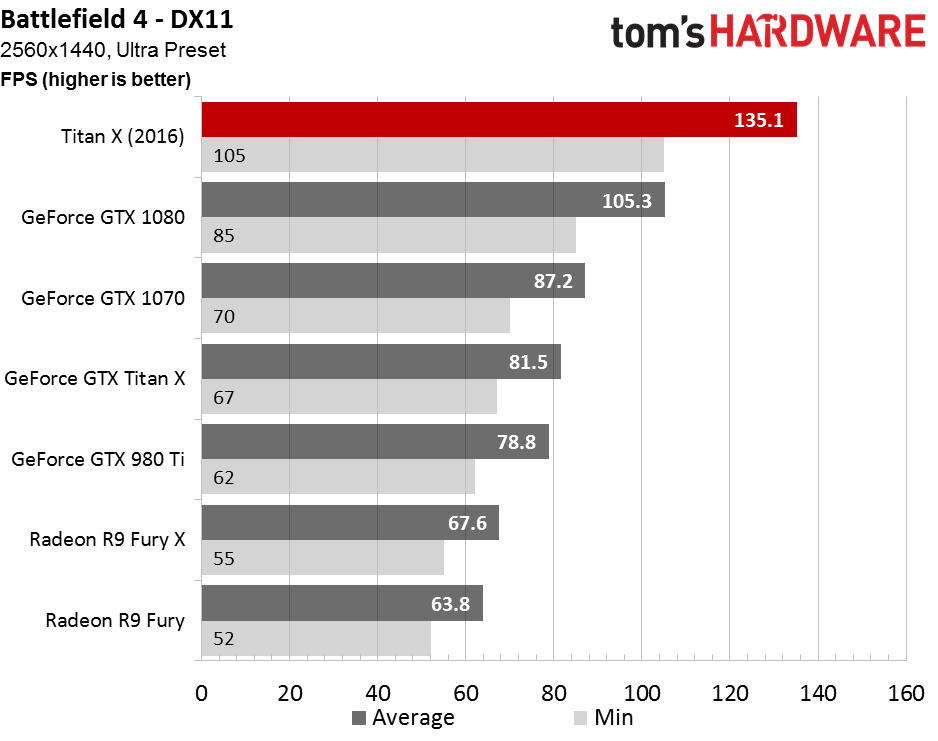
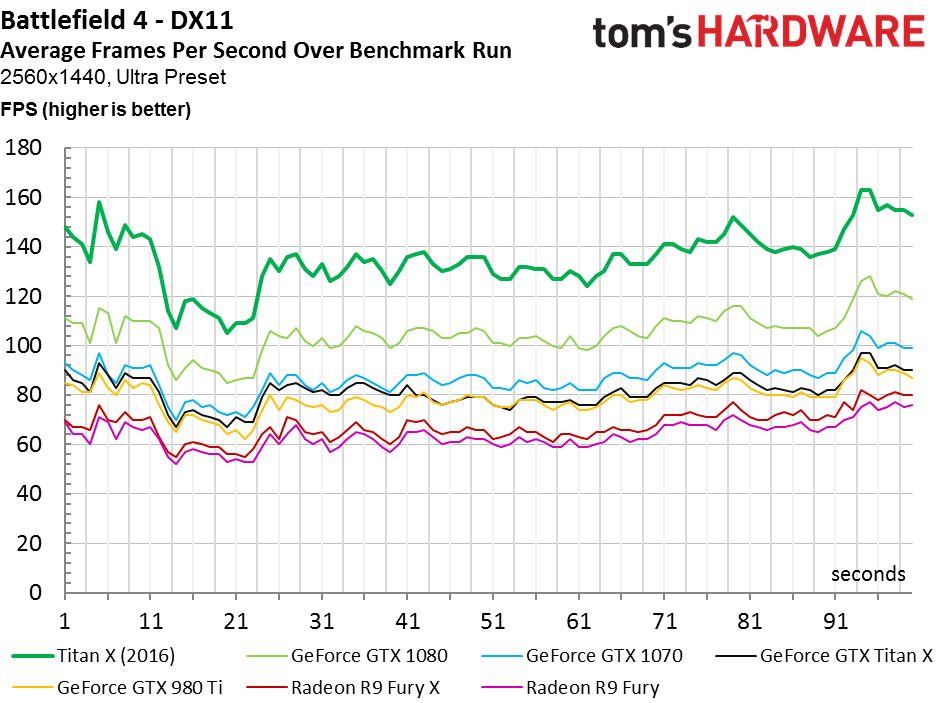
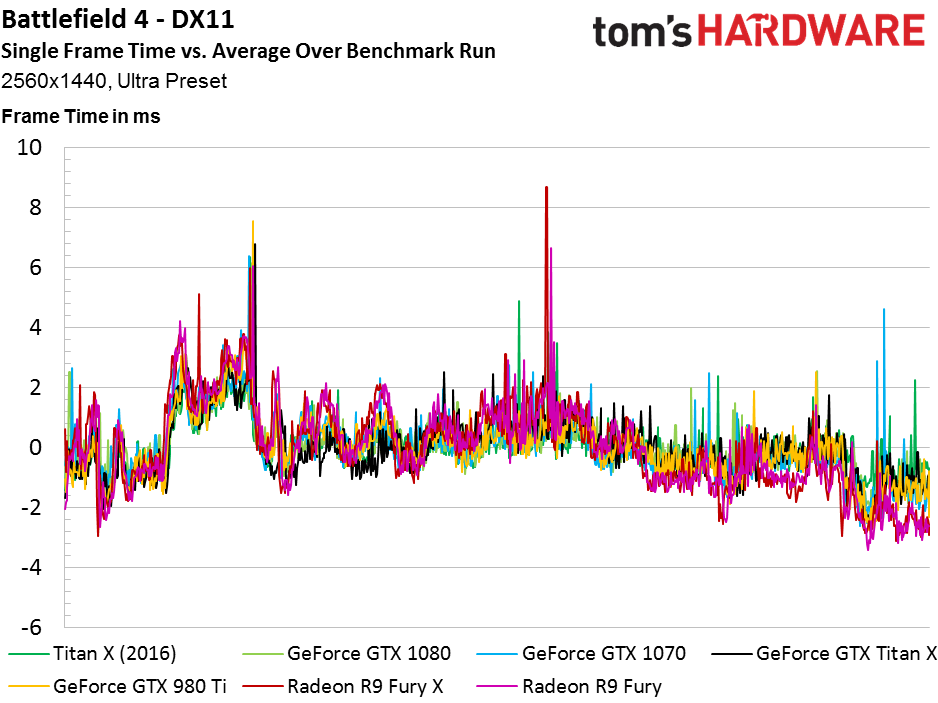
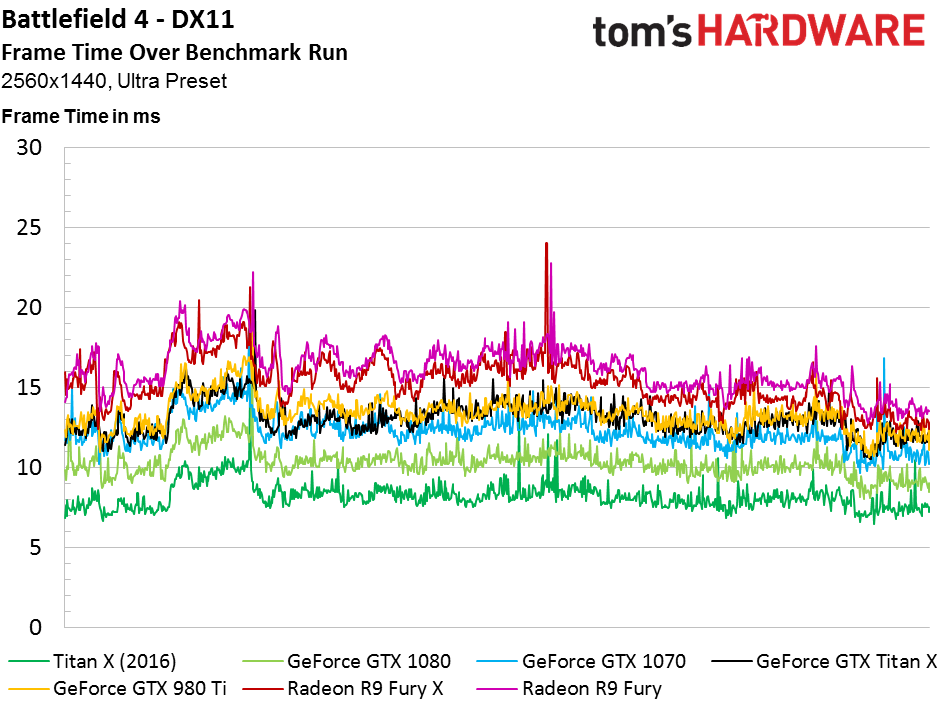
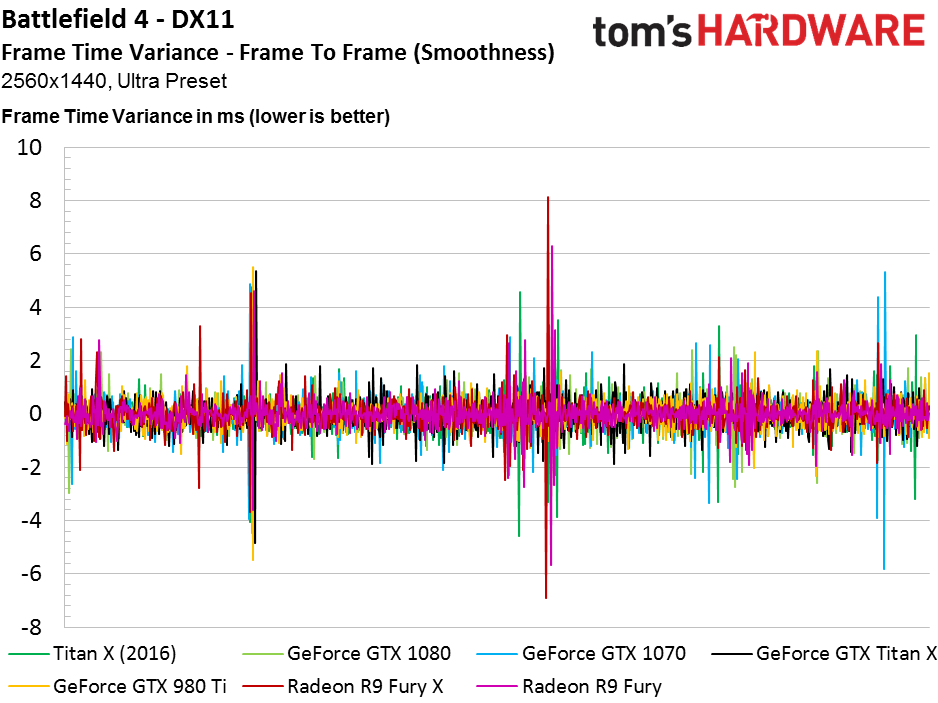
The Battlefield 4 single-player campaign is a mostly pure graphics benchmark, whereas the harder-to-test-consistently multiplayer component better reflects platform performance. DICE’s Frostbite engine certainly scales well to GPU horsepower though, already putting Titan X 28% above GTX 1080 at 2560x1440.
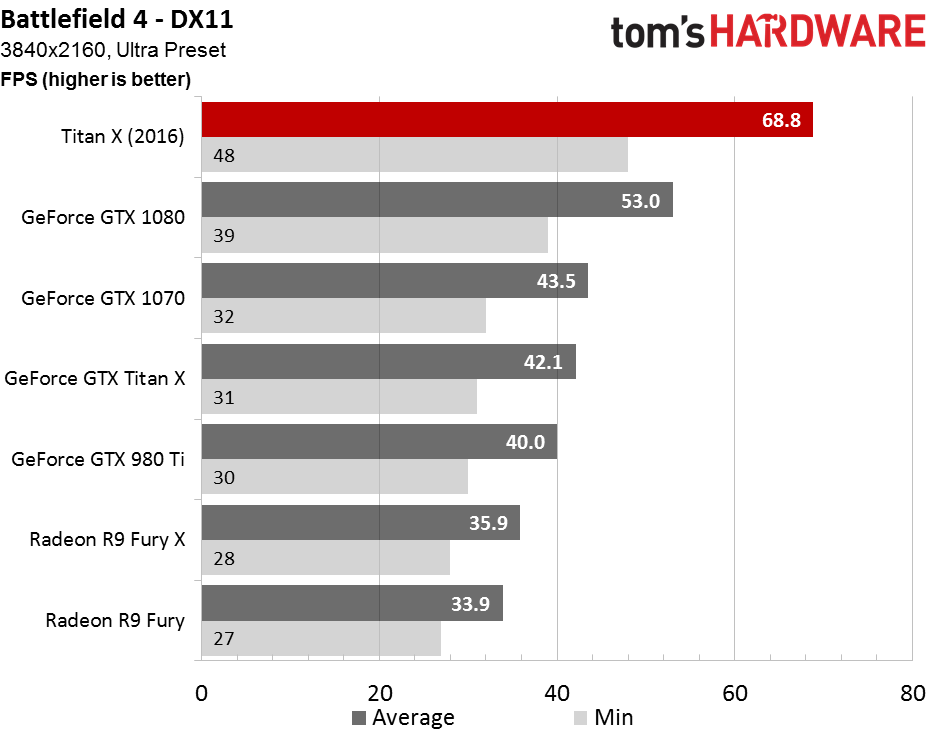

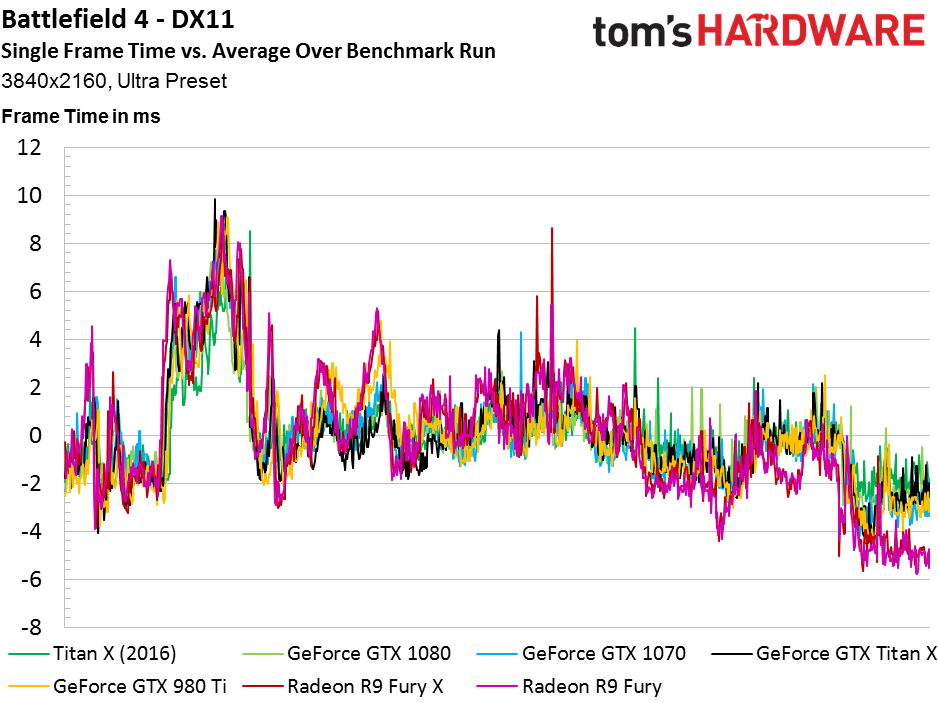
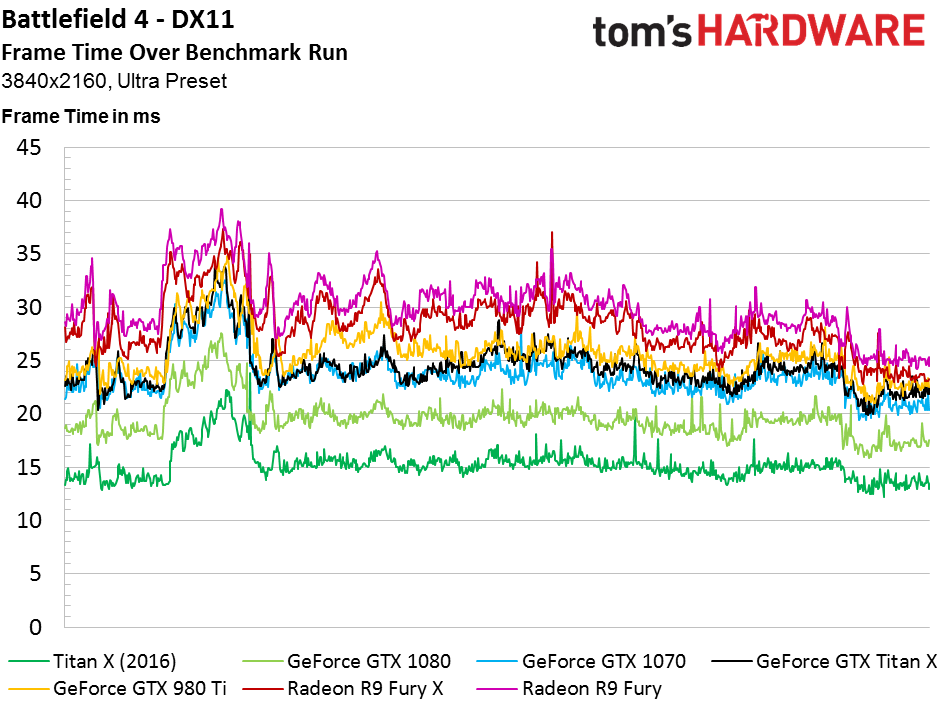
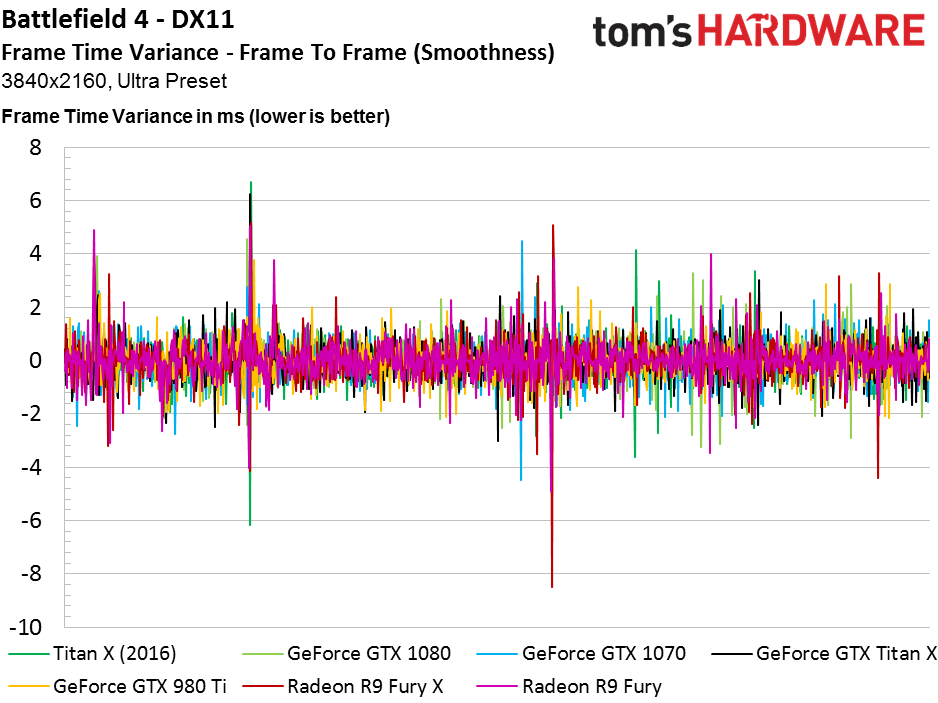
Titan X’s advantage grows to 30% at 4K. That’s nowhere near its 71%-higher price. However, if you’re looking at run at 3840x2160 using the Ultra detail preset, GP102 does deliver a 23%-higher minimum frame rate than the 1080, never dipping below 48 FPS in our 100-second run.
DOOM
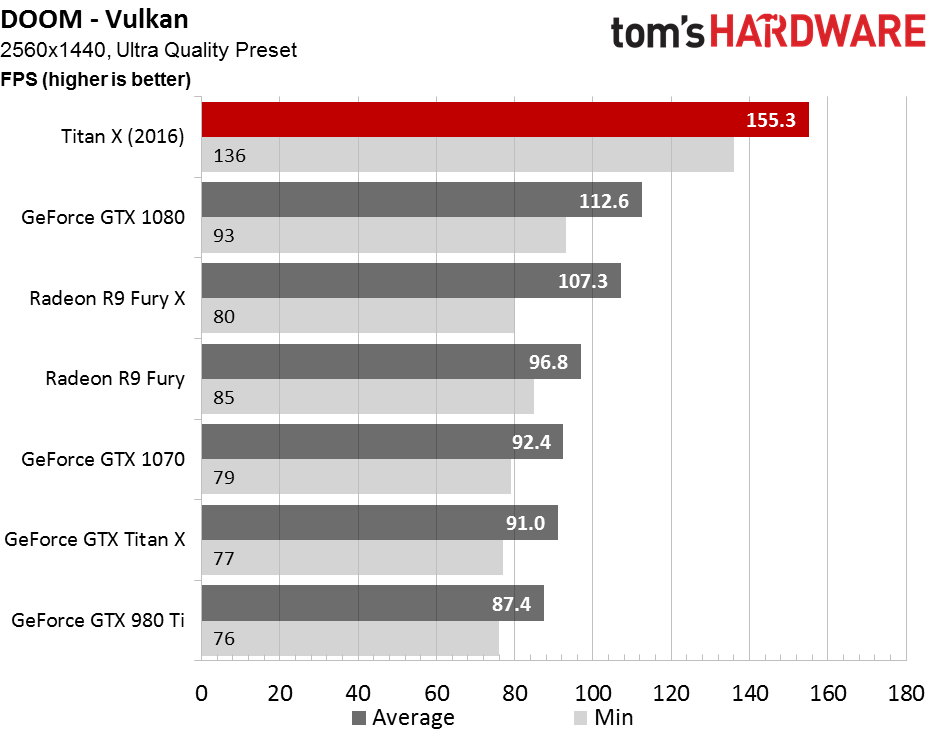
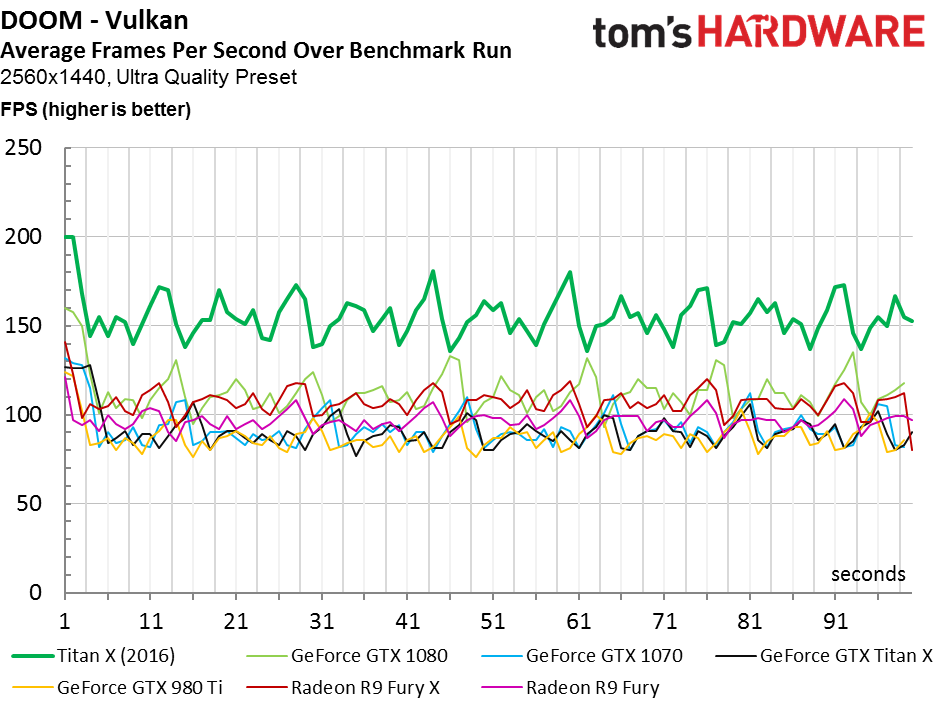
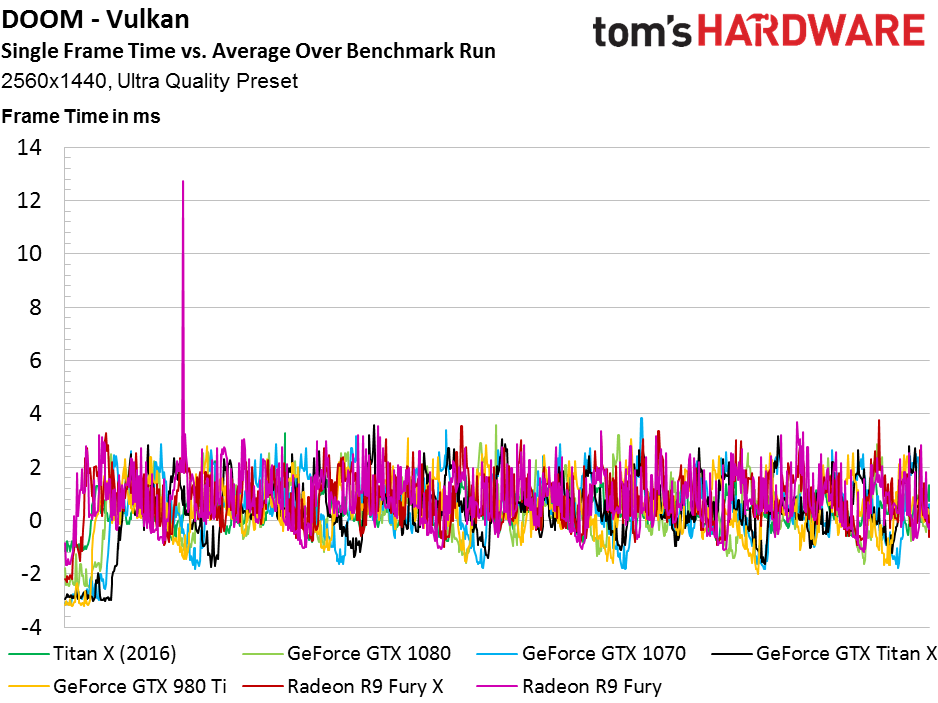
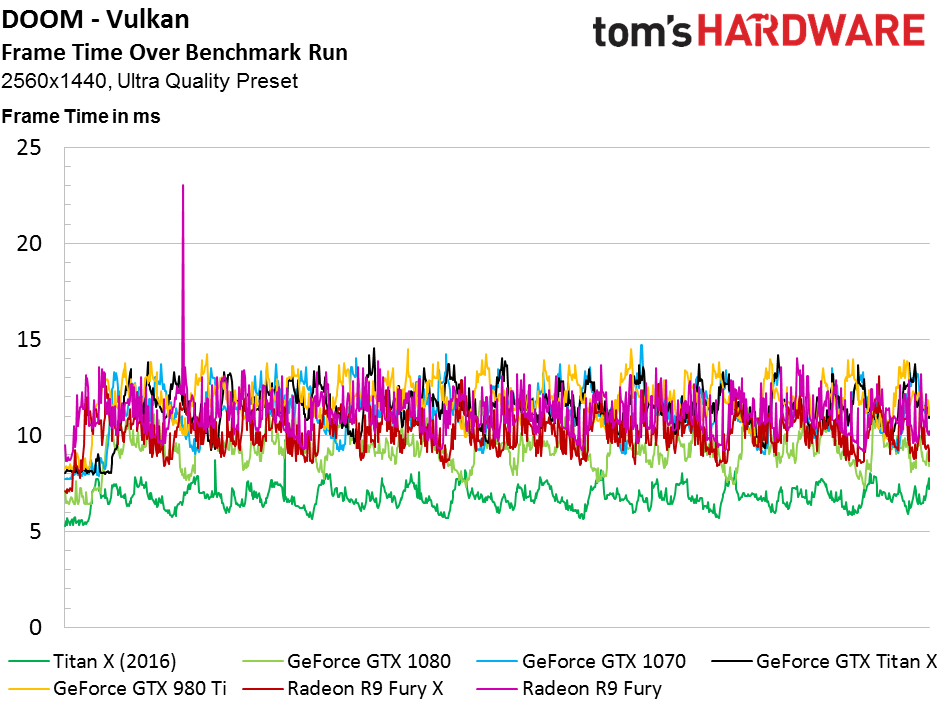
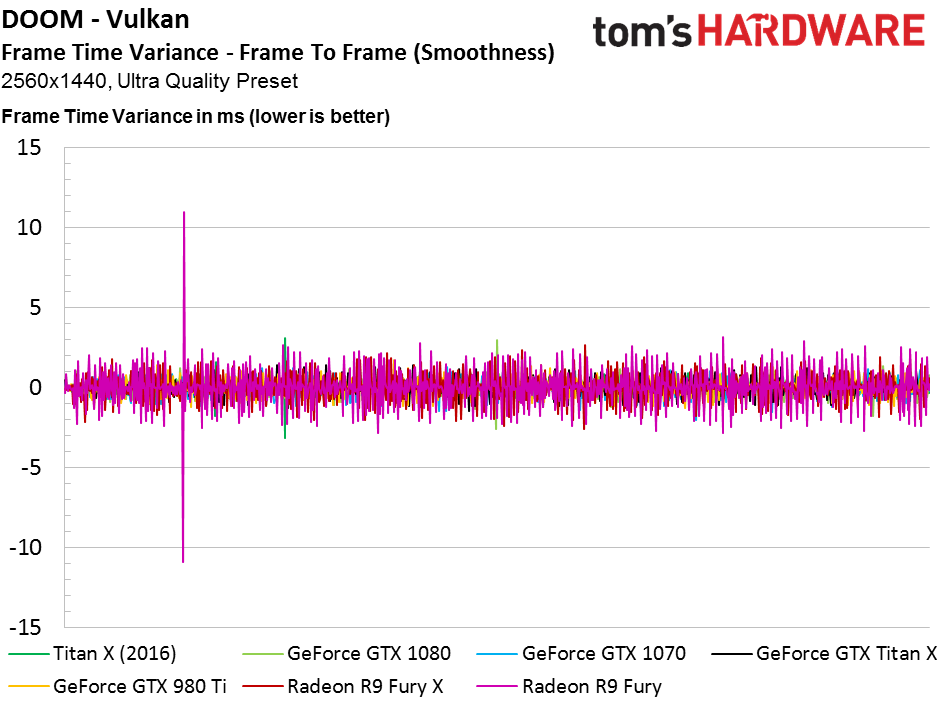
All of the frame rates we recorded in DOOM are beyond ample for QHD. Amazingly low frame time variance translates into fluid on-screen action, along with uncharacteristically small deltas between average and minimum frame rates. Titan X is 37% quicker than GTX 1080, with a 46% higher minimum frame rate.
Get Tom's Hardware's best news and in-depth reviews, straight to your inbox.
We also observe AMD’s Radeon R9 Fury X and Fury overtaking the GeForce GTX 1070. The Fury X even approaches to within a few frames per second of the 1080, on average.
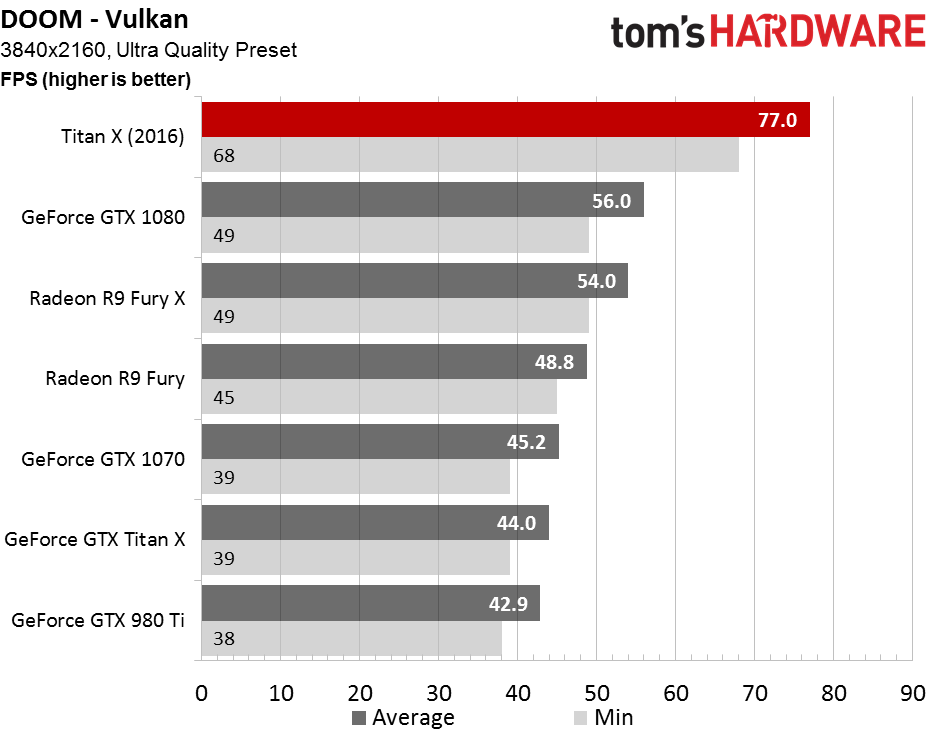
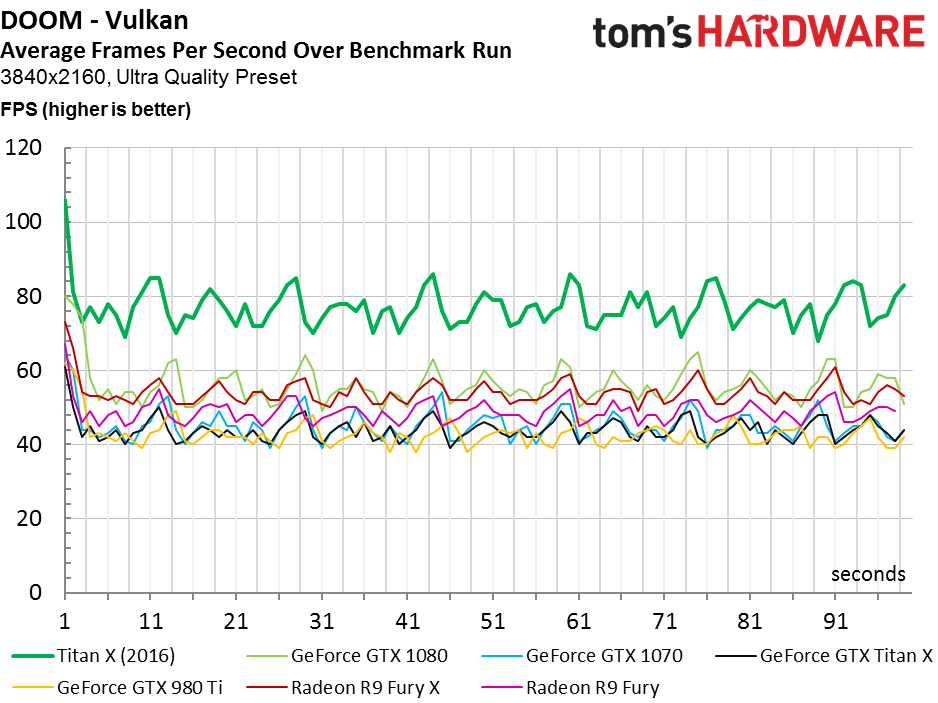
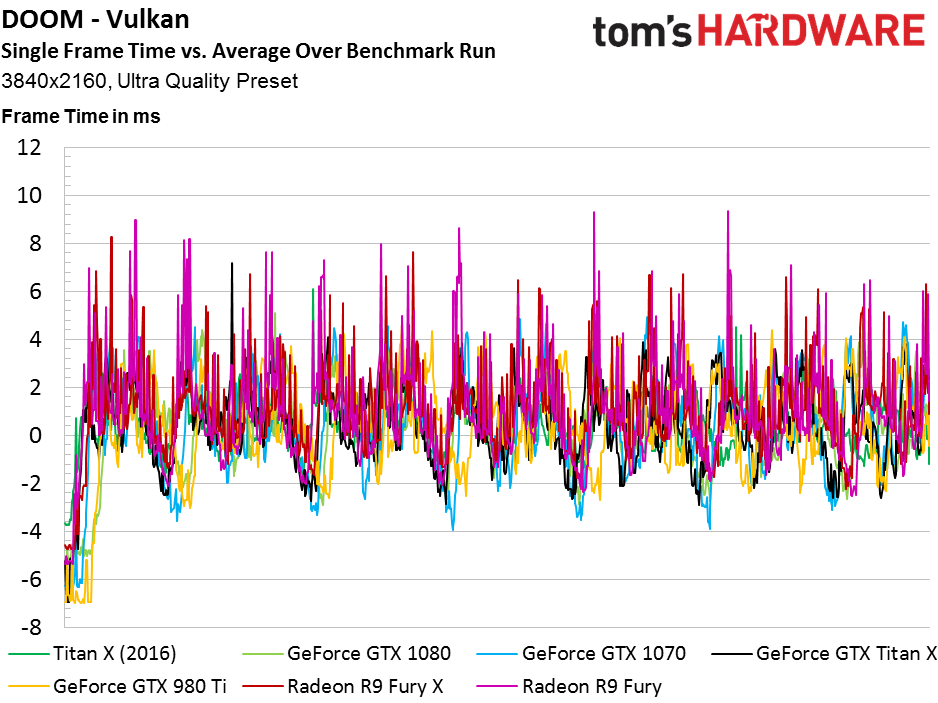
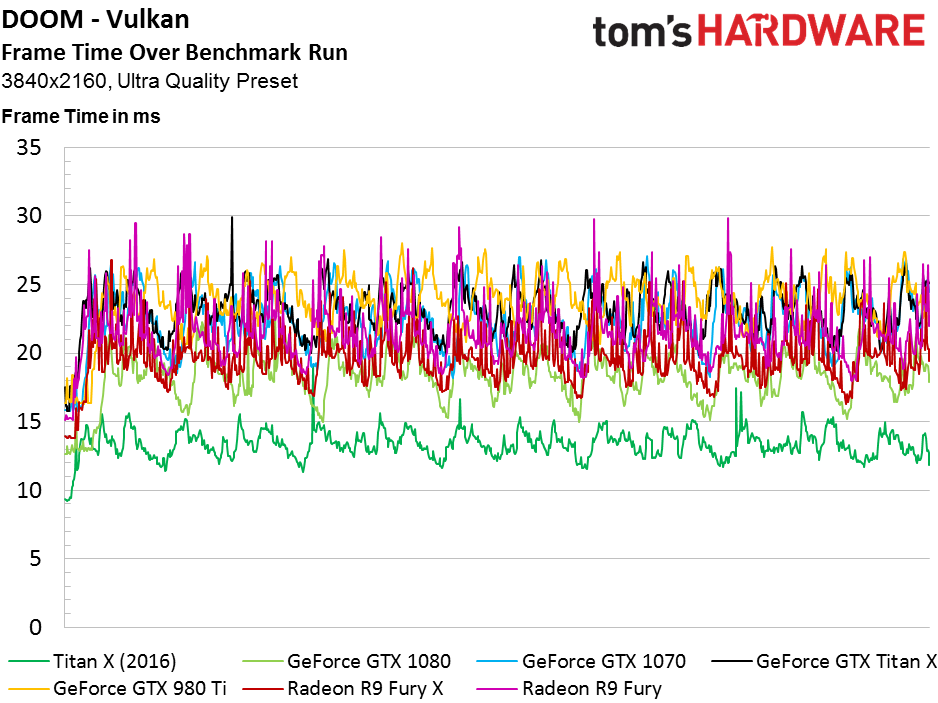
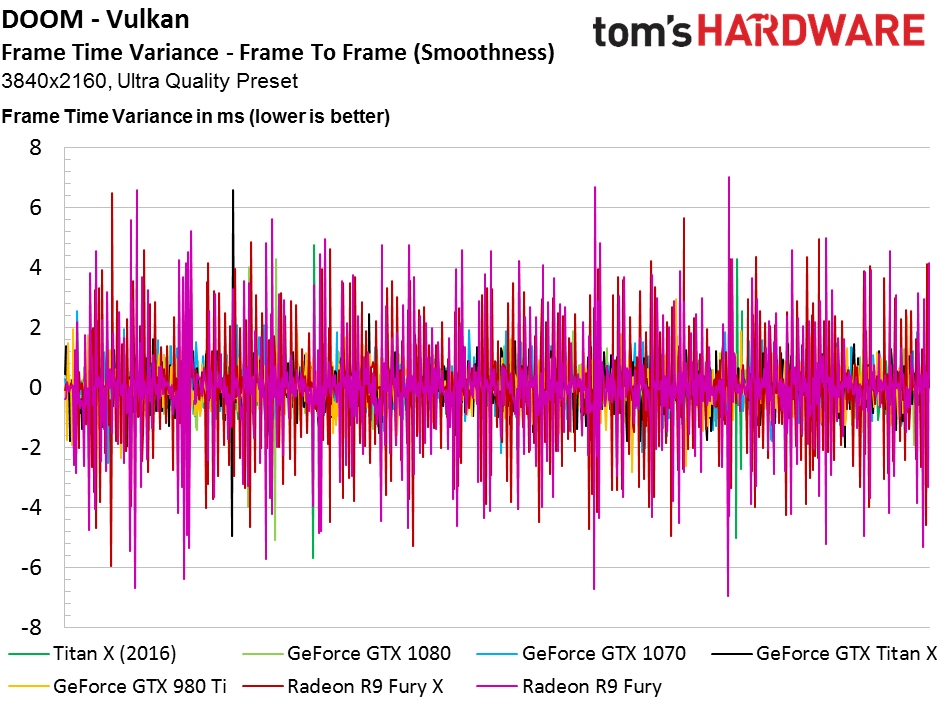
It gets even closer at 3840x2160, where gobs of memory bandwidth undoubtedly help Fiji reel in GTX 1080. Still, the Nvidia card ends up slightly faster. Should AMD manage to clean up its higher overall frame time spikes through an updated Vulkan driver, it may be able to close the gap.
No amount of software work is going to make Titan X a viable target, though. It stays about 38% faster than GTX 1080, demonstrating incredibly low frame time variance. In fact, the Titan X’s average frame rate is only 13% higher than its minimum!
MORE: Best Graphics Cards
MORE: Desktop GPU Performance Hierarchy Table
MORE: All Graphics Content
Current page: Ashes of the Singularity, Battlefield 4 And DOOM
Prev Page How We Tested Titan X Next Page GTA V, Hitman And Project CARS-
adamovera Archived comments are found here: http://www.tomshardware.com/forum/id-3142290/nvidia-titan-pascal-12gb-review.htmlReply -
chuckydb Well, the thermal throttling was to be expected with such a useless cooler, but that should not be an issue. If you are spending this much on a gpu, you should water-cool it!!! Problem solvedReply -
Jeff Fx I might spend $1,200 on a Titan X, because between 4K gaming and VR I'll get a lot of use out of it, but they don't seem to be available at anything close to that price at this time.Reply
Any word when we can get these at $1,200 or less?
I wish I was confident that we'd get good SLI support in VR, so I could just get a pair of 1080s, but I've had so many problems in the past with SLI in 3D, that getting the fastest single-card solution available seems like the best choice to me. -
ingtar33 $1200 for a gpu which temp throttles under load? THG, you guys raked AMD over the coals for this type of nonsense, and that was on a $500 card at the time.Reply -
Sakkura Interesting to see how the Titan X turned into an R9 Nano in your anechoic chamber. :DReply
As for the Titan X, that cooler just isn't good enough. Not sure I agree that memory modules running 90 degrees C is "well below" the manufacturer's limit of 95 degrees C. What if your ambient temperature is 5 or 10 degrees higher? -
hotroderx Basically the cards just one giant cash grab... I am shocked toms isn't denouncing this card! I could just see if Intel rated a CPU at 6ghz for the first 10secs it was running. Then throttled it back to something more manageable! but for those 10 secs you had the worlds fastest retail CPU.Reply -
tamalero Does this means there will be a GP101 with all core enabled later on? as in TI version?Reply -
hannibal TitanX Ti... No, 1080ti is cut down version. Most full ships will go to professinal cards and maybe we will see TitanZ later...Reply
-
blazorthon An extra $200 for a gimped cooler makes for a disappointing addition to the Titan cards.Reply
